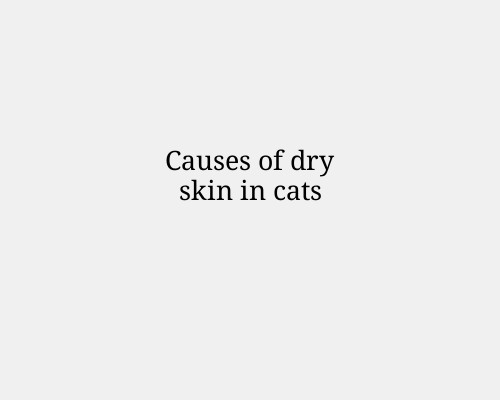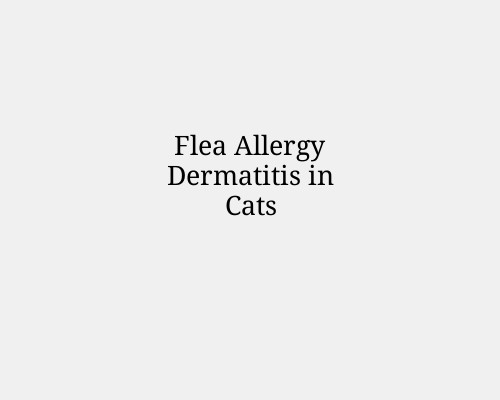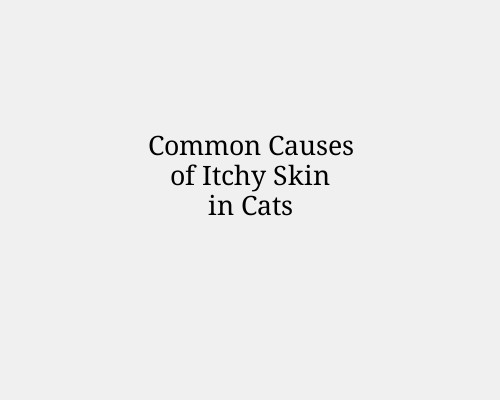Causes of dry skin in cats
Causes of dry skin in cats
Dry skin in cats is a common concern that can cause discomfort and indicate underlying health issues. Identifying the causes, applying effective remedies, and taking preventive measures can help maintain your cat’s skin health and overall well-being.
Causes of Dry Skin in Cats
Environmental Factors – Cold weather, low humidity, and excessive indoor heating can dry out a cat’s skin, leading to flakiness and irritation.
Poor Diet – A diet lacking essential fatty acids, vitamins, and hydration can contribute to dry skin.
Allergies – Cats may develop dry skin due to food allergies, environmental allergens (such as pollen and dust), or reactions to grooming products.
Parasites – Fleas, mites, and ringworm can irritate the skin, causing dryness, itching, and flaking.
Medical Conditions – Skin disorders like dermatitis, fungal infections, or systemic diseases such as hyperthyroidism and diabetes can lead to dry skin.
Overbathing – Frequent bathing, especially with harsh shampoos, strips the natural oils from a cat’s skin.
Dehydration – Inadequate water intake affects skin hydration, making it dry and flaky.
Obesity and Grooming Difficulties – Overweight cats may struggle to groom properly, leading to the accumulation of dry, flaky skin in neglected areas.
Remedies for Dry Skin in Cats
Improve Diet – Providing a well-balanced diet rich in omega-3 and omega-6 fatty acids from sources like fish oil can help improve skin hydration and elasticity.
Hydration – Ensure your cat drinks enough water by offering fresh water daily and incorporating wet food into their diet.
Humidifiers – Using a humidifier in dry indoor environments can help maintain adequate moisture levels in your cat’s skin.
Regular Grooming – Brushing your cat’s fur helps distribute natural oils evenly, preventing dry patches and removing dead skin.
Moisturizing Products – Applying vet-approved moisturizers or coconut oil can soothe dry skin and restore hydration.
Bathing Caution – Reduce bath frequency and use hypoallergenic or moisturizing cat shampoos to prevent excessive dryness.
Parasite Control – Use regular flea and tick prevention treatments to keep parasites at bay.
Veterinary Care – If dryness persists or is accompanied by other symptoms like excessive scratching or hair loss, consult a veterinarian for a thorough evaluation and treatment.
Prevention of Dry Skin in Cats
Balanced Nutrition – Feed your cat high-quality food with essential fatty acids to maintain skin and coat health.
Adequate Hydration – Encourage regular water intake to keep the skin hydrated.
Proper Grooming Routine – Regularly brush and inspect your cat’s fur for signs of dryness, parasites, or skin infections.
Allergen Management – Reduce exposure to potential allergens by maintaining a clean home, using hypoallergenic products, and identifying food sensitivities.
Flea and Parasite Prevention – Keep your cat on a veterinarian-recommended parasite prevention regimen.
Moderate Indoor Climate Control – Use a humidifier to prevent excessively dry air from affecting your cat’s skin.
Routine Veterinary Checkups – Regular health assessments can help detect underlying conditions early and prevent skin issues from worsening.
Dry skin in cats is often manageable with the right approach. By addressing the underlying causes and implementing proper care, pet owners can ensure their feline companions remain comfortable and healthy.







